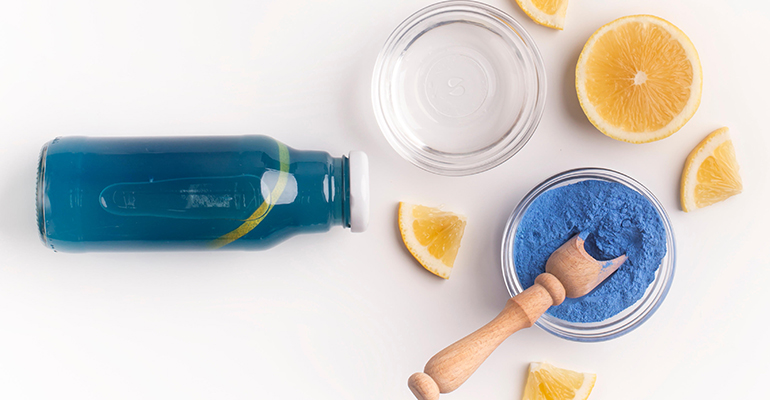Welcome to SJGLE.com! |Register for free|log in
Welcome to SJGLE.com! |Register for free|log in

Related Searches: Tea Vitamin Nutrients Ingredients paper cup packing
A number of recent high-profile launches in China, has helped create a buzz around blue food and drink products, Mintel researchers note. Starbucks and Heytea, a Chinese tea chain famous for creating salty cheese tea, have launched blue beverages while Beijing yoghurt brand Blueglass has added blue spirulina to its portfolio to offer consumers a blue-coloured yogurt.

There are almost no naturally-occurring bright blue foods so the combination is unusual and eye-catching. The prevalence of social media has undoubtedly contributed to the popularity of photogenic and aesthetically pleasing food and drink products, particularly among younger generations such as millennials and digital natives.
Blue as a comforting colour
However, senior food and drink analyst at Mintel, Roolee Lu puts the current Chinese interest down to a demand for comfort food as well as novelty. Reported levels of stress and tiredness are on the rise among Chinese consumers and while this has been exacerbated by the COVID-19 pandemic, underlying causes such as increased pressure related to work and academic performance were already present. One upshot for food manufacturers is that such stresses means that consumers are likely to be more receptive to comfort food and sensorial stimulation.
“Widespread emotional issues among Chinese consumers and desire for novel experience put blue, which is a less seen colour in food and drink, into the spotlight,” writes Lu. “Instead of being tasty or appetizing, the popularity of blue is more related to the growing demand for comfort foods and the importance of novel experience from product innovation.”
According to Mintel research, three out of 10 consumers in China say attractive colours would encourage them to try a beverage and nearly a third of consumers say it is important that snacks are ‘visually impressive’.
Using natural ingredients and additives to impart colour, however, will be increasingly important for consumers.
“We believe that blue is a starting point, and the future of food and drink will be more colourful under the demand for naturalness and balanced nutrition,” writes Lu. “After the COVID-19 outbreak, food safety has received rising attention. At the same time, naturalness is also an important choice factor across different food and drink categories. Therefore, using natural colours like colouring foods rather than artificial colours will align with consumers’ aspirations for clean labels while satisfying their demand of eating with eyes.”
Algae, flowers, and cabbage
So, what ingredient options do manufacturers have when trying to create blue food and drink products?
Micro-algae spirulina, a filamentous cyanobacteria, is a popular ingredient to add a blue-green colour thanks to its healthy associations. In addition to providing colour, spirulina is high in protein and packed full of nutrients.
Butterfly pea flower is also popular in south-east Asia for herbal beverages. Drinks made with the dried flowers of the butterfly pea plant (Clitoria ternatea) are bright blue but, due to their sensitivity to pH values, the colour changes to purple with the addition of an acidic ingredient, such as lemon juice. Use of butterfly pea flowers in packaged products, however, is limited.
Scientists recently synthesised a natural blue colour from red cabbage they say is nearly identical in functionality and tone to artificial brilliant blue FCF (FD&C Blue No. 1), an artificial colour that has been associated with negative health impacts.
The scientists, who spun off a company called Peak B to commercialise the colour, say their cyan colour is cheaper than current natural offerings such as spirulina and is more functional. Spirulina has a paler colour and does not blend easily with other colours to make different shades while Peak B’s colour is vibrant.
Meanwhile, purple has been a trending ingredient across Asian countries in recent years due to the popularity of the ingredient ube, a Filipino purple yam, that is used to add natural colour to food and drink.
E-newsletter
Tags